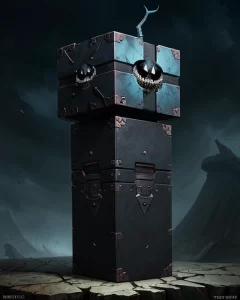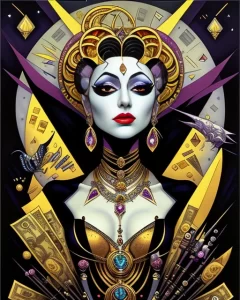The world of NFTs has captivated the imagination of creators, collectors, and investors alike. These unique digital assets, built on the blockchain, represent a new paradigm in digital ownership and have opened up a wealth of possibilities for artists, musicians, and creators across various industries. But navigating the intricate world of NFTs requires more than just a passing interest; it calls for a strategic approach and a deep understanding of the underlying concepts and mechanics. This comprehensive guide will delve into the essential tips and strategies that can help you create successful NFTs.
Table of Contents:
- Define Your Purpose and Target Audience
- Choose the Right Blockchain and Platform
- Develop a Captivating Visual Identity
- Craft a Compelling Narrative
- Utilize Utility and Functionality
- Build a Strong Community
- Develop a Marketing Strategy
- Establish a Roadmap and Launch Strategy
- Understand Legal and Regulatory Considerations
- Conclusion: Embracing the NFT Revolution
- FAQs
Define Your Purpose and Target Audience
Before diving into the technical aspects of NFT creation, it’s crucial to establish a clear purpose and a defined target audience. Ask yourself: What do you hope to achieve with your NFT project? Are you aiming to generate revenue, build a community, or promote a brand? Understanding your objectives will help you shape your NFT collection and tailor your marketing efforts.
Next, identify your target audience. Who are you trying to reach with your NFTs? Are you targeting art enthusiasts, gamers, music lovers, or a specific niche within the crypto community? Understanding your audience’s interests, preferences, and buying habits will be instrumental in crafting captivating NFTs and marketing them effectively.
Choose the Right Blockchain and Platform
The blockchain you choose for your NFTs will significantly impact the overall experience. Some popular options include Ethereum, Solana, Flow, and Tezos. Each platform offers unique features, costs, and levels of scalability, and the choice depends on your specific needs. For instance, Ethereum is the most established blockchain for NFTs, but it can be expensive due to high gas fees. Solana, known for its speed and affordability, has gained popularity for its NFT ecosystem.
Once you select a blockchain, you’ll need to choose a platform for creating and minting your NFTs. Popular NFT marketplaces like OpenSea, Rarible, Nifty Gateway, and Foundation offer various features, fees, and interfaces. Research different platforms and consider factors like ease of use, community support, and royalty options to find the best fit for your needs.
Develop a Captivating Visual Identity
Visual appeal is paramount in the NFT world. Your NFTs need to stand out in a crowded marketplace and capture the attention of potential buyers. Invest time in developing a strong visual identity that reflects your brand, artistic style, or the theme of your collection. Consider the following factors:
- Style and Aesthetics: Choose a visual style that resonates with your target audience and aligns with your brand identity. Explore different artistic styles, mediums, and aesthetics to find your unique voice.
- Color Palette and Composition: Deliberately select colors and composition elements that create a visually harmonious and impactful experience. Use color theory and design principles to guide your decisions.
- Animation and Interactivity: Consider incorporating animation, interactive elements, or dynamic visuals to enhance engagement and create a more immersive experience for viewers.
If you lack artistic skills, consider collaborating with designers or artists who can help you bring your vision to life. Remember, a visually compelling NFT is more likely to attract attention, capture interest, and generate buzz within the NFT community.
Craft a Compelling Narrative
Beyond visuals, your NFTs should tell a story. This narrative adds depth and meaning to your collection, making it more than just a collection of digital assets. Consider the following approaches:
- Personal Storytelling: Share your personal journey, motivations, or experiences that inspired the creation of your NFTs. This personal touch can build a connection with your audience.
- Concept and Mythology: Develop a fictional world, characters, or lore around your NFTs. This can create intrigue and foster a sense of community around your project.
- Social Commentary: Use your NFTs as a platform for social commentary, raising awareness about important issues or promoting a positive message.
A well-crafted narrative can add value to your NFTs, attract a loyal following, and contribute to the long-term success of your project.
Utilize Utility and Functionality
Adding utility and functionality to your NFTs can enhance their value proposition and create a more compelling experience for holders. Consider the following ideas:
- Access to Exclusive Content: Offer NFT holders access to exclusive content, behind-the-scenes footage, or early releases. This creates a sense of community and exclusivity.
- In-Game Items or Experiences: If you’re creating NFTs for a game, integrate them as in-game items, characters, or unlockable features, providing players with unique advantages.
- Community Governance: Give NFT holders voting rights or decision-making power within your community or project. This fosters a sense of ownership and engagement.
By incorporating utility, you create a compelling reason for people to acquire your NFTs beyond just their aesthetic value. This can boost demand and increase the perceived value of your collection.
Build a Strong Community
A thriving community is essential for the long-term success of any NFT project. Building a community requires active engagement and fostering a sense of belonging among your followers.
- Engage on Social Media: Actively engage with your audience on social media platforms like Twitter, Discord, and Telegram. Share updates about your project, respond to inquiries, and create interactive content.
- Run Contests and Giveaways: Encourage engagement by hosting contests, giveaways, and exclusive events for NFT holders. This can drive excitement and create a sense of anticipation.
- Foster Collaboration: Collaborate with other creators, influencers, or brands to expand your reach and cross-promote your NFTs. This can introduce your project to a wider audience.
Building a strong community takes time and effort, but it’s crucial for creating a sustainable and successful NFT project.
Develop a Marketing Strategy
Once you’ve created your NFTs, it’s time to market them effectively to reach your target audience. A comprehensive marketing strategy can help you attract attention, generate buzz, and achieve your project’s goals.
- Target Your Audience: Focus your marketing efforts on platforms and channels where your target audience is most active. Conduct research and use relevant hashtags and keywords.
- Leverage Partnerships: Collaborate with influencers, media outlets, or other NFT creators to promote your project to a wider audience.
- Content Marketing: Create compelling content, such as articles, blog posts, social media updates, or video content, to educate, inform, and engage your audience about your NFT project.
Remember, effective marketing is about building relationships, fostering trust, and telling a compelling story. A strong marketing strategy can make all the difference in attracting potential buyers and ensuring the success of your NFT project.
Establish a Roadmap and Launch Strategy
Before launching your NFT project, it’s crucial to have a clear roadmap and a well-defined launch strategy. These elements will provide direction, manage expectations, and guide your efforts toward achieving your goals.
- Define Milestones and Objectives: Outline key milestones, such as the initial launch, community building, utility integrations, or future collaborations. Clearly define objectives for each milestone, whether it’s generating a specific number of sales, attracting new followers, or achieving broader community engagement.
- Pre-Launch Hype and Marketing: Generate anticipation and excitement before launch by teasing your NFTs, sharing sneak peeks, and engaging with your community. This can build buzz and create a sense of exclusivity.
- Minting and Distribution: Decide on a minting strategy and a fair distribution system. Factors to consider include the number of NFTs to be minted, the pricing strategy, and potential whitelist mechanisms for early access.
- Post-Launch Maintenance: Post-launch activities are crucial for maintaining momentum and fostering continued engagement. This might include releasing additional NFTs, introducing new features, or focusing on community building efforts.
A well-structured roadmap and launch strategy will help you stay on track, achieve your objectives, and build a sustainable NFT project.
Understand Legal and Regulatory Considerations
The NFT landscape is rapidly evolving, and it’s essential to stay informed about legal and regulatory considerations. These factors can significantly impact your project, so it’s crucial to seek professional guidance to ensure compliance:
- Intellectual Property Rights: Understand the legal framework surrounding the ownership and protection of intellectual property in the context of NFTs. Make sure you have clear ownership rights to the assets or artwork you’re using.
- Tax Implications: Consult with a tax professional to understand the potential tax implications of creating, selling, and holding NFTs. Tax regulations vary across jurisdictions, and it’s crucial to comply with all applicable laws.
- Anti-Money Laundering (AML) and Know Your Customer (KYC) Regulations: Some NFT platforms may have AML and KYC requirements for creators and sellers. Familiarize yourself with these regulations and ensure your project adheres to them.
Seeking legal guidance and staying updated on evolving regulations will safeguard your NFT project and help you navigate the legal complexities of this rapidly changing landscape.
Conclusion: Embracing the NFT Revolution
Creating successful NFTs requires a multifaceted approach that encompasses artistic vision, technical proficiency, strategic planning, and a strong understanding of the NFT ecosystem. By following these tips and diligently engaging in the process, creators can leverage the power of NFTs to unlock new possibilities, build thriving communities, and contribute to the broader NFT revolution. Remember, the NFT space is ever-evolving, so staying informed, adaptable, and passionate will be crucial for long-term success. Embrace the journey, explore the potential, and contribute to the ongoing evolution of this fascinating and dynamic digital landscape.
FAQs
What are the Different Types of NFTs?
NFTs encompass a wide range of digital assets, each with unique characteristics and potential applications. Some key types include:
- Art NFTs: Digital artworks, including paintings, photographs, videos, and 3D models, tokenized on the blockchain.
- Collectible NFTs: Digital collectibles, such as trading cards, virtual items, and game assets, often with limited editions or unique features.
- Music NFTs: Audio recordings, albums, or music experiences tokenized as NFTs, providing fans with exclusive access, ownership rights, or behind-the-scenes content.
- Gaming NFTs: In-game items, characters, or virtual worlds integrated into blockchain games, allowing players to own and trade these assets.
- Domain Names NFTs: Digital domain names registered on a decentralized domain name system, allowing users to own and manage their online identity.
How Do I Choose the Right Blockchain for My NFTs?
Selecting the appropriate blockchain is a crucial step in NFT creation. Each blockchain offers distinct features, costs, and functionalities. Some key considerations include:
- Gas Fees: The cost of transactions on a blockchain. Consider the average transaction fee and the potential for fluctuations in gas prices.
- Scalability: The ability of the network to handle a large number of transactions. Look for blockchains with high transaction throughput.
- Security: The robustness of the network’s security measures to protect against attacks and fraud.
- Community and Ecosystem: The size and activity of the developer community and the wider NFT ecosystem on the blockchain.
How Do I Market My NFTs Effectively?
Effective NFT marketing requires a strategic approach that considers your target audience, available channels, and compelling content. Key strategies include:
- Social Media Marketing: Utilize social platforms where your target audience is active. Engage in conversations, share content, and run contests to generate buzz.
- Community Building: Create a community around your NFTs by building a Discord server or Telegram group. Foster engagement, organize events, and reward loyal members.
- Content Marketing: Develop engaging content, such as blog posts, articles, or videos, that showcase your NFTs, explain their values, and engage your audience.
- Influencer Marketing: Collaborate with relevant influencers to promote your NFTs to a wider audience. Select influencers who align with your brand and target audience.
What are the Legal Implications of NFTs?
The legal landscape of NFTs is still evolving, so it’s essential to consult with legal professionals for guidance. Some key legal considerations include:
- Intellectual Property: Ensure you have clear ownership rights to any artwork or assets used in your NFT projects. Protect your intellectual property through appropriate legal means.
- Tax Implications: Understand the tax implications of creating, selling, and holding NFTs. Consult with a tax professional to ensure compliance.
- Regulatory Compliance: Stay informed about evolving regulations related to NFTs in your jurisdiction. Adhere to any applicable AML and KYC requirements.
What are the Future Trends in the NFT Market?
The NFT market is constantly evolving, driven by technological advancements, community innovation, and broader cultural shifts. Some emerging trends include:
- Interoperability: NFTs from different blockchains interacting with each other, enabling seamless transferability and use across various platforms.
- Decentralized Governance: NFTs empowering token holders with voting rights and decision-making power within communities and projects.
- Utility and Real-World Applications: NFTs integrated into everyday life, providing access to digital and physical assets, experiences, or privileges.
- The Metaverse: NFTs playing a significant role in shaping the metaverse, with virtual assets, experiences, and ownership.






